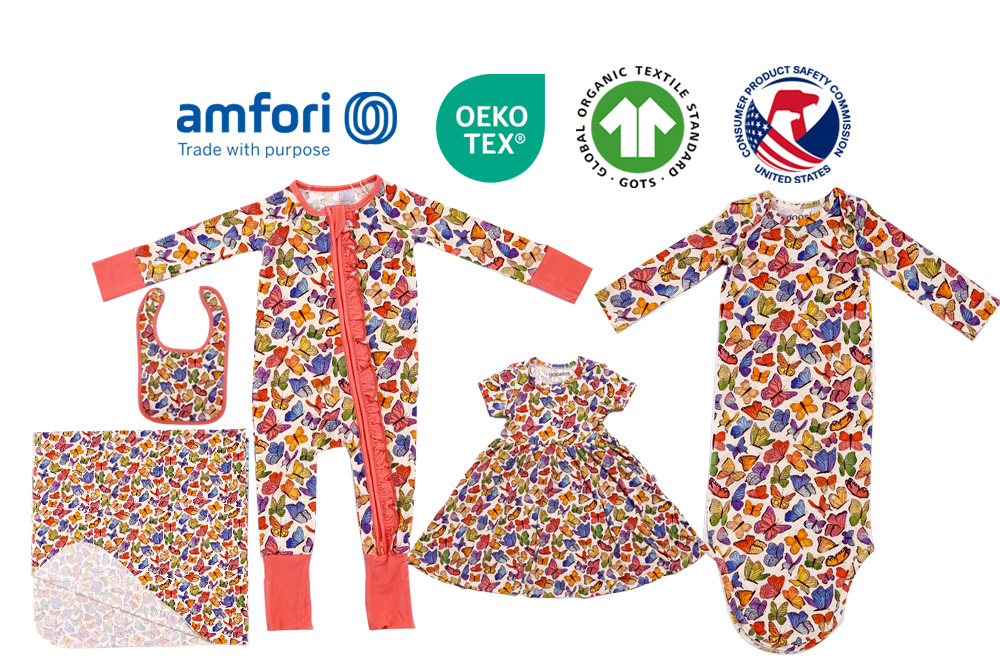
Ensuring the safety of baby clothing is one of the top priorities for parents. As the global baby apparel market continues to expand, particularly in the U.S., understanding the stringent safety standards and testing procedures involved in producing baby garments is crucial. Parents want peace of mind that the clothes their children wear are free from harmful chemicals, choking hazards, and other potential dangers. This article explores the essential safety regulations parents should be aware of when purchasing baby clothing, along with practical tips to ensure they are making safe choices.
Why Baby Clothing Safety Standards Matter
Parents may assume that all baby clothing sold in the U.S. meets high safety standards. However, while there are strict regulations, not all clothing manufacturers adhere to these guidelines with the same level of care. Babies have delicate skin, are prone to choking, and are still developing their immune systems. Therefore, the materials, construction, and fit of baby clothes are critical to their health and safety.
In the U.S., baby clothing must comply with standards set by organizations like the Consumer Product Safety Commission (CPSC) and ASTM International. These organizations enforce rigorous guidelines for ensuring that clothes are free from hazardous chemicals, choking risks, flammable materials, and more. Understanding these standards can help parents make informed decisions when shopping for their little ones.
Key Safety Standards for Baby Clothing
1.Chemical Safety: Free from Harmful Substances
Babies' sensitive skin can easily react to harmful chemicals found in certain fabrics and dyes. It's vital to ensure that baby clothing is tested for chemical safety. Certifications like OEKO-TEX® Standard 100 and GOTS (Global Organic Textile Standard) ensure that the fabric used in baby clothing is free from harmful chemicals such as formaldehyde, azo dyes, and phthalates.
Parents should look for clothing labeled as "organic" or those that carry a GOTS or OEKO-TEX® certification to ensure the garments are made from safe materials. Organic cotton and bamboo fabrics are two popular options for baby clothing that are free from chemicals and safe for sensitive skin.
2.Flammability: A Crucial Concern
Flammability is one of the most significant concerns in children's clothing. According to the CPSC, all baby sleepwear intended for children under the age of nine months must meet specific flammability standards. Sleepwear must either be made from flame-resistant fabric or designed to fit snugly to reduce the risk of catching fire.
When purchasing baby pajamas or sleepwear, parents should check for labels indicating that the garment is either flame-resistant or intended to be worn snugly for safety. Loose-fitting sleepwear made from non-flame-resistant materials poses a serious risk.
3.Choking Hazards: Secure Fasteners and Accessories
Babies love to explore with their hands and mouths, which means any small, detachable parts on clothing can pose a choking risk. Parents should be mindful of clothes with buttons, snaps, zippers, or other small accessories that could come loose. All fasteners and closures should be securely attached and pass rigorous pull tests to ensure they do not pose a choking hazard.
To reduce risk, always opt for clothing with seamless or securely fastened details. Avoid clothing with embellishments like rhinestones, beads, or sequins that can easily break off.
4.Fit and Design: Prioritizing Comfort and Safety
The fit of baby clothing plays an essential role in safety. Ill-fitting clothes can lead to discomfort, restricted movement, or even potential strangulation hazards. For instance, clothing with drawstrings, especially around the neck area, is prohibited for infants and young children due to strangulation risks.
When shopping for baby clothes, parents should look for well-designed, fitted items that do not have loose strings, oversized hoods, or other potentially dangerous features.
5.Durability: Avoiding Wear and Tear Hazards
Baby clothes endure a lot of wear, tear, and washing. Poorly constructed garments may develop loose threads, frayed edges, or small parts that can come undone, creating potential hazards. Clothes should be made from durable materials and sewn with high-quality stitching to withstand repeated laundering and use without falling apart.
Clothing that shows signs of wear, such as loose stitching or unraveling fabric, should be discarded or repaired to prevent any risk of injury to the baby.
Practical Tips for Parents to Ensure Baby Clothing Safety
Parents can take several proactive steps to ensure that the clothing they purchase for their little ones meets the highest safety standards:
- Check for certifications: Always look for clothing that has been certified by reputable organizations such as GOTS or OEKO-TEX®. These certifications ensure the garments are free from harmful chemicals and have passed safety tests.
- Read labels: Ensure that the garment meets CPSC flammability standards for baby sleepwear. Look for labels that state the clothing is either flame-resistant or designed to fit snugly.
- Inspect the details: Check all fasteners, buttons, zippers, and embellishments to ensure they are securely attached and cannot be easily pulled off.
- Choose the right size: Ensure that baby clothes fit well without being too loose or too tight. Avoid clothing with drawstrings or other hazardous design features.
- Opt for organic fabrics: Organic cotton and bamboo are excellent fabric choices for babies. These materials are soft, breathable, and free from harmful chemicals, reducing the risk of skin irritations.
- Replace damaged clothing: Clothing that shows signs of wear, such as loose threads, broken zippers, or missing buttons, should be replaced or repaired immediately.
These rigorous testing procedures are critical in ensuring baby clothes are safe for everyday wear.